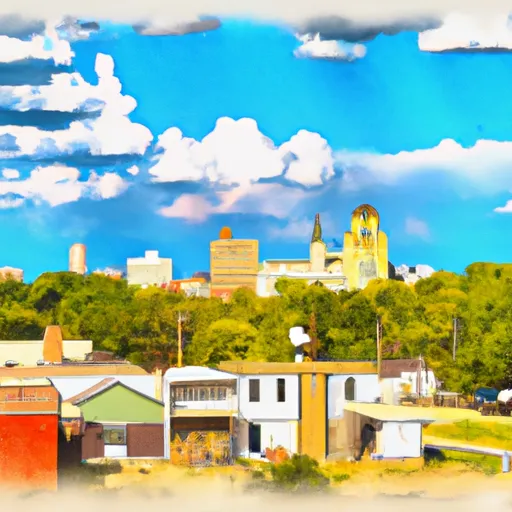°F
°F
mph
Windspeed
%
Humidity











Kirksville, Missouri is a vibrant city located in the northeastern part of the state. The area experiences a humid continental climate, characterized by hot and humid summers, cold winters, and moderate rainfall throughout the year. Summers are often sunny and can reach temperatures in the 80s°F (27-32°C), while winters are cold with temperatures dropping below freezing, and occasional snowfall.
Hydrologically, Kirksville is situated near the Chariton River and features several small lakes and ponds. Outdoor enthusiasts can enjoy various water activities like fishing, boating, and kayaking in these serene water bodies.
The city offers a range of outdoor recreational opportunities for nature lovers. Thousand Hills State Park, just a few miles away, is a popular destination for hiking, camping, and wildlife watching. The park features scenic trails, picnic areas, and a large lake for fishing and boating.
Kirksville is also home to several city parks, providing ample opportunities for walking, biking, and enjoying nature. These parks often host community events and offer facilities for sports like basketball, soccer, and tennis.
Overall, Kirksville, Missouri, with its pleasant climate, proximity to water bodies, and diverse outdoor recreational offerings, is an ideal destination for nature enthusiasts and those seeking an active lifestyle.
Weather Forecast
Kirksville receives approximately 990mm of rain per year, with humidity levels near 82% and air temperatures averaging around 11°C. Kirksville has a plant hardyness factor of 5, meaning plants and agriculture in this region thrive during a short period during spring and early summer. Most plants will die off during the colder winter months.
Regional Streamflow Levels
32
Cubic Feet Per Second
154
Cubic Feet Per Second
66
Cubic Feet Per Second
62
Cubic Feet Per Second
Nearby Camping
| Camping Area | Reservations | Toilets | Showers |
|---|---|---|---|
| Oakland - Bull Shoals Lake | |||
| Tyler Bend - Buffalo National River | |||
| Ozark Isle - Bull Shoals Lake | |||
| Bull Shoals State Park | |||
| Lakeview - Bull Shoals Lake | |||
| Buck Creek - Bull Shoals Lake |



